On the 70 anniversary of the Battle of the Caucasus (defensive stage from July 25 to December 31 1942). Part of 2
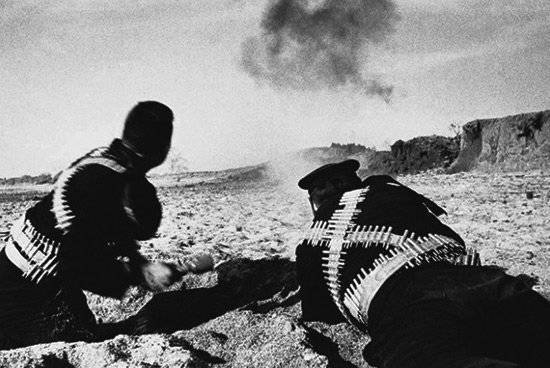
Despite the measures taken by the Headquarters, the Wehrmacht had sufficient forces to develop a simultaneous offensive both in the direction of Baku and Batumi - parts of the 1st tank and the 17th Field Army, and to capture the passes of the Main Caucasus Range - parts of the 49th Mountain Corps (from the 17th Army). In addition, German troops struck in the direction of Anapa - Novorossiysk. On August 19, part of the 17th Army launched an offensive in the Novorossiysk direction. The Soviet 47th Army, which held the defense in this direction, was able to repel the first strike. However, on August 28 the Wehrmacht resumed the offensive and on August 31 captured Anapa. As a result, the ships of the Azov military flotilla had to break into the Black Sea.
On August 23, German troops went on the offensive in the Mozdok direction, here the 9th Soviet Army held the defense. On August 25, Mozdok was captured. At the same time, the 23rd Panzer Division attacked Prokhladny and took it on August 25th. Further attempts to break through the line of Cool - Ordzhonikidze did not bring success. Soviet troops, using natural barriers, created a deeply echeloned defensive line. In early September, German troops began to force the Terek and occupied a small bridgehead on the south bank of the river; on September 4, the Germans launched a new offensive with 2 tank and 2 infantry divisions. The Germans had superiority in artillery more than 6 times and in tanks more than 4 times. However, they did not achieve much success, having suffered heavy losses due to Soviet strikes. aviation. On September 24, a new German offensive began in this direction. The strike force was strengthened by the 5th SS Viking Panzer Division, which was removed from the Tuapse direction. The Germans advanced in the direction of Ordzhonikidze and along the Prokhladny - Grozny railway along the valley of the Sunzha River to Grozny. After four days of fierce fighting, German troops captured Terek, Planovskoye, Elkhotovo, Illarionovka, but could not get further than Malgobek. The ever-increasing resistance of the Soviet troops and the enormous losses suffered in the battles in the area of Mozdok, Malgobek and Elkhotovo forced the Wehrmacht to go on the defensive. As a result of the Mozdok-Malgobek defensive operation (September 1-28, 1942), the plans of the German command to seize the Grozny and Baku oil regions were frustrated.
Simultaneously with the battles in the Grozny direction, a battle unfolded in the central part of the Main Caucasian Range. Initially, the battle was obviously not in favor of the Soviet forces - units of the 46 Army of the Polar Division, which did not prepare the defenses in the foothills. Wehrmacht forces specially prepared for combat in mountain conditions units - 49 th corps corps and two Romanian mountain rifle divisions, managed to quickly capture almost all the passes to the west of Mount Elbrus. 16 August was captured Kadar gorge. 21 August German climbers hoisted the Nazi flag on Elbrus. This was done by the detachment of Captain Grot from the 1 th Mountain Division Edelweiss. Before the war, the grotto visited Tyrnyauz and climbed to Elbrus, as a mining engineer, he was able to easily inspect the area, providing a detailed account of what he saw. The Edelves climbers became national heroes in Germany, the headlines shouted: “We are the masters of Europe! The Caucasus is subdued! .. ”. In early September, the German units occupied the Marukh and Sanchar passes. As a result, a threat emerged that German troops would reach Sukhumi and seaside communications.
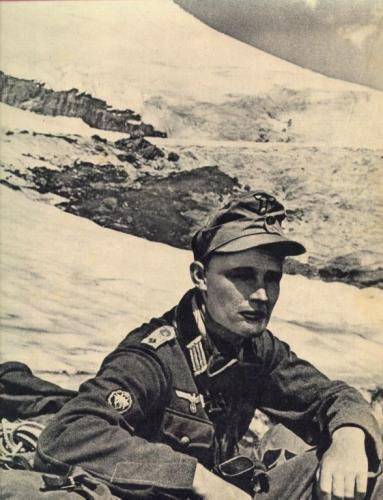
Captain Grotto.
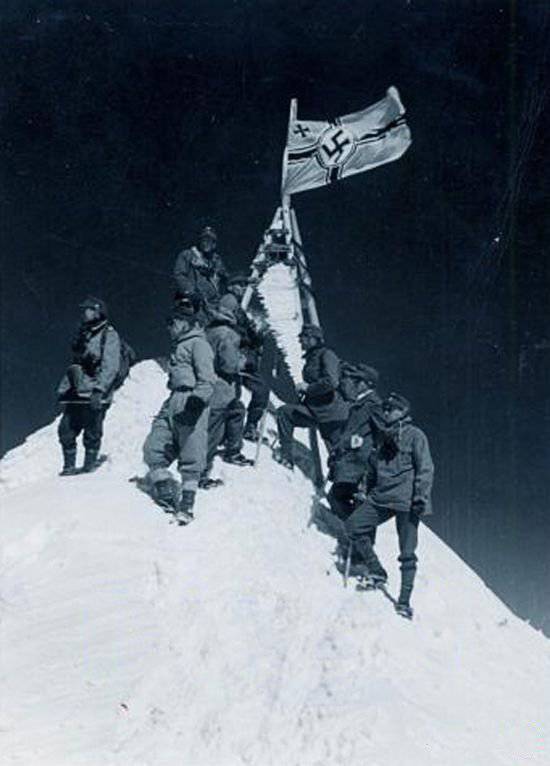
21 August 1942, the Nazis set their flag on Elbrus.
Novorossiysk Defensive Operation (August 19 to September 26 1942 of the year)
While German troops stormed the approaches to Grozny, Ordzhonikidze (Vladikavkaz), the passes of the central part of the Caucasus Mountains, the battle for Novorossiysk began. The German command planned to capture Novorossiysk and continue to launch an offensive along the Black Sea coast in the direction of Tuapse - Sukhumi - Batumi. The strike was struck by a strike force from the 17 German Army — the 5 Army Corps and the 3 Romanian Army — a cavalry corps composed of the 5, 6, and 9 cavalry divisions. Already in the course of the operation, the strike force was reinforced by three infantry divisions of the 11 Army, which moved across the Kerch Strait.
The Soviet command for the defense of Novorossiysk and the Taman Peninsula 17 of August created the Novorossiysk Defensive Area (NOR) under the command of Major General G. P. Kotov (Major General A. A. Grechko from September 9 September). Rear Admiral S. G. Gorshkov, commander of the Azov flotilla, was appointed deputy Kotov for the naval unit. The NOR included the 8 Army, one rifle division from the 47 Army, the Azov Military Flotilla, Temryuk, Kerch, Novorossiysk naval bases and the combined aviation group (part of the 56 of the Aviation Division and the Black Sea Fleet force) . Measures were taken to create a powerful line of defense, but by the time of the German offensive, only a smaller part of the measures had been implemented. NOR troops, exsanguinated in previous battles, were inferior to the Wehrmacht: in manpower in 237 times, in artillery and mortars in 4 times, in tanks and aircraft in 7 times.
19 August Wehrmacht launched an offensive, striking in the direction of the villages of Abinskaya, Krymskaya. Auxiliary attacks were directed to Temryuk and the Taman Peninsula, where a few Soviet garrisons held defenses. After fierce battles, units of the 47 Army and Marine Corps stopped the enemy by August 25, preventing it from seizing Novorossiysk. On August 29, having received reinforcements from the Tuapse direction, the Germans resumed the offensive and, at the cost of great losses, August 31 captured Anapa and reached the coast, cutting off part of the Soviet troops on the Taman Peninsula. September 3 surrounded parts were evacuated by sea to Gelendzhik. September 7 of the Wehrmacht made their way to Novorossiysk, violent street battles began. The Germans seized the railway station, grain elevator and port. By 11 September, at the cost of tremendous efforts, the enemy was stopped in the southeastern part of the city. The fighting for Novorossiysk continued until September 26, in fact the city was completely destroyed. However, the German troops were unable to break through to Tuapse along the coast, and went over to the defensive. The offensive plan along the Black Sea coast was foiled.
As a result of the second stage of the German offensive (19 August - 29 September 1942), the German troops won a number of victories, captured the Taman peninsula, reached the foothills of the Main Caucasus Range, capturing part of its passes. But on the whole, the Red Army was able to withstand a powerful onslaught and stop the enemy’s advance and prevent it from breaking through to the South Caucasus, seizing the regions of Grozny and Baku, and seizing the Black Sea coast from Novorossiysk to Batumi. The balance of forces in the Caucasus gradually began to change in favor of the Red Army. This contributed to the transfer of a significant part of the German troops in the Stalingrad direction. German troops suffered heavy losses in people, technology, were exhausted by the fighting, partly losing offensive power.
The headquarters continued to focus on the Caucasus. On August 23, a member of the State Treasury Committee Lawrence Beria arrived from Moscow to Tbilisi. He carried out the replacement of a number of responsible leaders of the front and army leadership. Measures were taken to improve aviation reconnaissance. Much work has been done on arranging fortifications - defense units, strongholds, pillboxes, trenches and anti-tank ditches, barrier systems - preparing for the collapse of rocks, destroying roads and flooding them, on the most important passes, on the Military Ossetian and Georgian Military roads. . At the main pass routes and roads, commandant's offices were established, which had engineers, radio stations. To counteract the enemy's bypass actions, special units were formed, up to company size, reinforced by sappers, which could quickly block a possible enemy breakthrough. Separate mountain rifle detachments were also created, a company of battalions with a company of climbers was sent to the most inaccessible areas, those paths that could not be safely covered were blown up. September 1 The Supreme Command Headquarters made an important organizational decision - the North Caucasus and Transcaucasian fronts were united. The united front was called Transcaucasian. The management of the SCF has become the base for the Black Sea Group of the Transcaucasian Front. This significantly increased the stability of the Soviet defense on the coastal sector of the front.
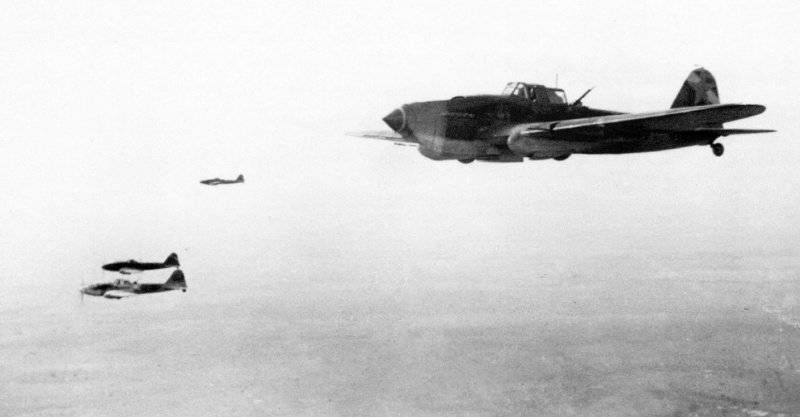
A group of attack aircraft Il-2 7-th Guards Assault Aviation Regiment 230-th Assault Air Division during the air. In the foreground is the Il-2 attack aircraft of Captain VB Emelianenko, the future Hero of the Soviet Union. North Caucasus Front.
The failure of the German offensive
Tuapse defensive operation (September 25 to December 20 1942 of the year). The German command, after the failure of operations to break into the South Caucasus in August-September 1942, decided by the forces of the 17 Army under Colonel-General Richard Ruoff (over 162 thousand people, 2266 guns and mortars, 147 tanks and assault guns and 350 combat aircraft), strike again at Tuapse. The defense was held here by the Black Sea group of Colonel-General Ya.T. Cherevichienko (from October, led by the defense, Lieutenant-General I.Ye. Petrov), it included 18-I, 56-I and 47-I armies, 5-I Air Army ( the number of groups of troops - 109 thousand people, 1152 guns and mortars, 71 aircraft). In addition, the Tuapse Defense District was created here.
September 25, after two days of air strikes and artillery preparation, the German troops launched an offensive. The main attack was delivered by the Tuapse group (it included mountain infantry and light infantry units) from Neftegorsk and an auxiliary strike was delivered - from Goryachiy Klyuch, the Germans advanced in converging directions to Shaumyan. The aim of the offensive was the encirclement and destruction of the 18 of the Soviet army, Lieutenant-General F. V. Kamkov, the blocking of the Black Sea group of Soviet troops, the deprivation of the Black Sea fleet of bases and ports. By September 30, the German-Romanian forces were able to penetrate in some defense sectors of the 18 and 56 armies to 5-10 km. There was a threat of falling Tuapse. The Soviet command launched a series of counterattacks, and by October 9 the German offensive was stopped. In these battles, the Germans lost more than 10 thousand people.
October 14 German group "Tuapse" resumed the offensive. German troops delivered simultaneous strikes on Shahumyan, the village of Sadovoe. October 17 Germans captured Shahumyan, 56-I army was pressed, there was a threat of encirclement 18-th army. However, the Black Sea Group received reinforcements, it changed the balance of power in this area, on October 23 the German troops were stopped, and on October 31 defensively.
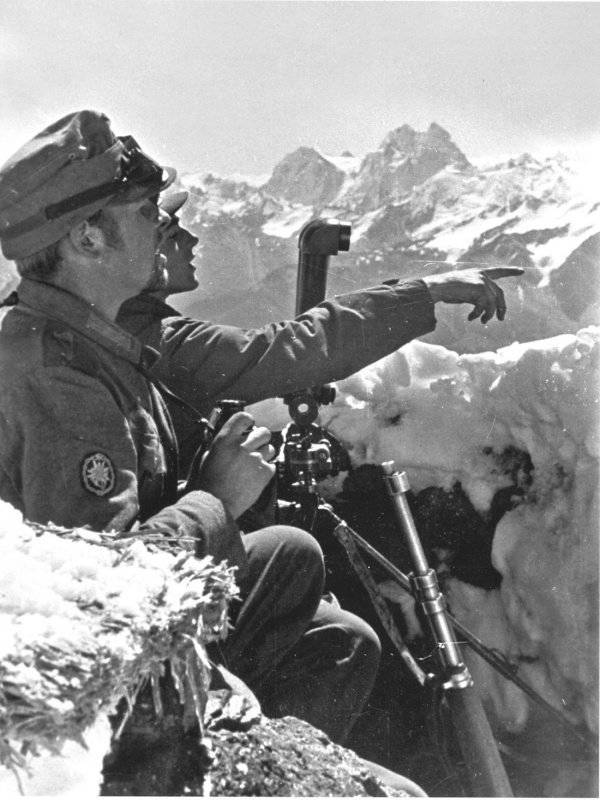
Observation point of mountain rangers in the mountains in the Caucasus.
The German command pulled up reserves and in the middle of November the Wehrmacht launched the third attack on the Tuapse direction, trying to break through to the village of St. George's Tuapse. The enemy managed to penetrate into the defense of the 18 Army up to 8 km in depth. However, this success of the German-Romanian troops ended. The strong resistance of the Soviet troops forced the Germans to stop. Already 26 November 18-I army launched an offensive, striking with two strike forces. By December 17, the German-Romanian grouping in this direction was broken and thrown back across the river Pshish. Aviation played a major role in these battles - the airplanes of the 5 Air Army shot down and destroyed the enemy’s machine at 131 airfields, the coastal artillery, the Black Sea Fleet and the marines took an active part in the operation. As a result of this operation, the German attempt to break through to Tuapse was thwarted, the Wehrmacht suffered heavy losses and went on the defensive on the entire front of the Black Sea group of the Transcaucasian Front.
Nalchik-Ordzhonikidze defensive operation (October 25 - November 12 1942). By October 25, the German command was able to secretly regroup the 1 tank army and concentrate its main forces (two tank and one motorized divisions) in the Nalchik direction. The Germans planned to seize Ordzhonikidze in order to then develop an offensive in the direction of Grozny - Baku and along the Georgian Military Highway on Tbilisi.
Here, the defense was held by the Northern Group of Forces, Lieutenant General I.I. Maslennikov: 9-I, 37-I, 44-I and 58-I armies, two separate infantry and one cavalry corps. From the air, the group was supported by the 4-I Air Army. The command of the Northern Group missed the preparation of the enemy for a strike, although the intelligence of the 9 and 37 army reported on suspicious movements of the enemy troops. They considered that the Germans were strengthening their defensive orders. At that time, the Soviet command itself was conducting a counter-offensive preparation in the Malgobeksko-Mozdok sector (in the sector of the 9 Army), where the main forces and reserves were concentrated. On the line of Nalchik - Ordzhonikidze, the 37-I army that was weakened by previous battles and had no tanks kept up the defense. Therefore, the German command was able to create a huge superiority in forces on the 6-kilometer stretch of breakthrough: 3 times in manpower, 10 times in guns and mortars, the Soviet side did not have tanks at all.
On the morning of October 25, after a powerful aviation and artillery preparation, the German troops launched an offensive. The defense of the 37 Army was broken through: the Germans captured Nalchik on October 28, and on November 2 broke through the outer line of the Ordzhonikidze defensive region, by the end of the day capturing Gizel (a suburb of Ordzhonikidze). To stabilize the situation, the Soviet command transferred part of the troops from the Grozny area to the Ordzhonikidze sector. 3-4 November, the Germans concentrated in the area of Gizel to 150 tanks and tried to build on success, but did not achieve success. November 5 Soviet troops with their counter-forces forced the Wehrmacht to go on the defensive.
For the German troops in the area of Gizeli there was a threat of encirclement. The Soviet command used this moment and on November 6 launched a counter-offensive, attempting to block the Gizelian grouping. 11 November Gizel was liberated, the German group was defeated, was thrown over the river Fiagdon. It was not possible to surround the German troops, but the last attempt of the Wehrmacht to break through to Grozny, Baku and the South Caucasus was foiled.
After the completion of the Nalchik-Ordzhonikidze defensive operation, the Soviet command organized a counter-offensive in the Mozdok area. November 13 launched an offensive unit of the 9 Army. But it was not possible to break through the defenses of the German troops, the Soviet troops were only able to penetrate the German order for several kilometers, reaching the eastern bank of the Ardon and Fiagdon rivers. At the end of November and the beginning of December 1942, the troops of the 9 Army repeated the offensive attempts, but they also had no success. As a result, the attack on the Mozdok area was postponed until the beginning of January 1943.
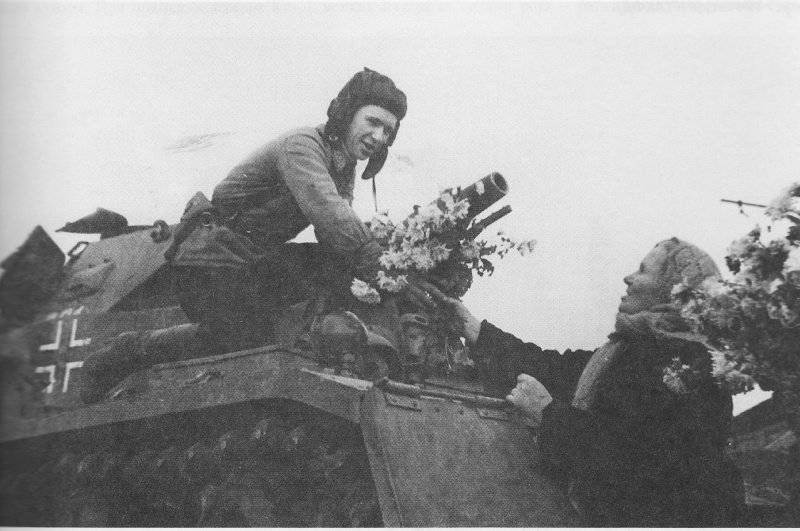
Soviet tanker on a captured German tank Pz.Kpfw IV in Vladikavkaz (at that time Ordzhonikidze).
Results of the defensive stage of the battle for the Caucasus
During the first stage of the battle for the Caucasus, which took place from July to December 1942, the Wehrmacht achieved great success: the rich agricultural areas of the Don and Kuban, the Taman Peninsula, part of the North Caucasus were captured, and reached the foothills of the Main Caucasus Range, having mastered part of the passes. However, in general, the German plan "Edelweiss" was failed. German troops could not seize the oil-producing areas of Grozny and Baku, break through into the South Caucasus, take the Black Sea coast all the way to the Turkish border, establishing direct contact with the Turkish troops. Turkey has not acted on the side of Germany. German-Romanian troops suffered heavy losses - about 100 thousand people, the shock group was drained of blood. Soviet troops completed the main task - they stopped the enemy's offensive in all directions. German troops were stopped east of Mozdok, on the approaches to Ordzhonikidze (Vladikavkaz), on the passes of the Main Range, in the southeastern part of Novorossiysk. From Tuapse, the German-Romanian troops were driven back.
One of the main reasons why the German offensive in the Caucasus did not achieve its goals was the dispersal of forces. The German military-political leadership began to pay more attention to the battle for Stalingrad, where they transferred the 4-th tank army and the 3-th Romanian army. In December, in connection with the defeat of the German grouping near Stalingrad, several more German military units were withdrawn from the Caucasus direction, which further weakened Army Group A. As a result, by the beginning of 1943, the Soviet troops surpassed the Wehrmacht in the Caucasus in number, both in personnel and in equipment and armaments.
It is also necessary to take into account the factor of great attention of the Stavka and the General Staff to the Caucasus, he also played a big role in the failure of the plans of the German command. Much attention was paid to restoring the stability of the command and control system and measures to improve it. In addition, despite the difficult situation on other sectors of the Soviet-German front, the Supreme Command Headquarters constantly strengthened the Caucasian direction with fresh troops. From July to October 1942 of the year threw around 100 thousands of marching reinforcements, a significant number of military units, special units, equipment and armament to the Caucasian Front.
It should be noted that the fighting in the Caucasus took place in the specific conditions of the mountainous terrain, which required the Red Army to master special forms and methods of dealing with the enemy. The organization of connections and parts was improved, special mountain groups were created. The units were reinforced by engineer units, engineering equipment, mining equipment, vehicles, including baggage, received more radio stations. In the course of the battles with the enemy, the interaction of the ground forces with the ships of the Black Sea Fleet and the Azov military flotilla received great development. The ships covered the ground forces from the flanks, supported the defenses and attacks with naval and coastal artillery, carried out anti-parachute measures. The crews of the Marine Corps formed, which covered themselves with undying glory in the battles for the Caucasus. In addition, the Black Sea Fleet, the Azov, Volga, and Caspian fleets played a large role in the delivery of reinforcements, military supplies, and the evacuation of wounded, civilians, and material values. So, in the second half of 1942, ships and vessels transported more than 200 thousand people, 250 thousand tons of various cargoes. Soviet sailors sank the enemy ship 51, with a total displacement of 120 thousand tons.
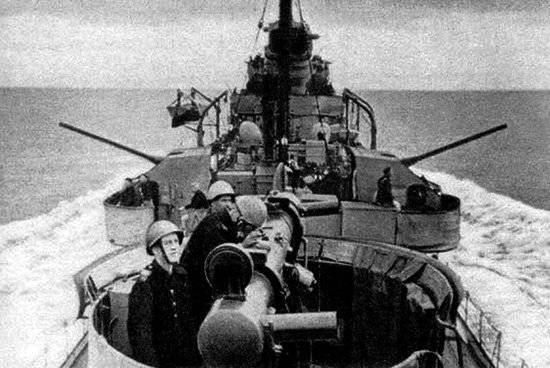
In November 1942, the offensive capabilities of the Wehrmacht in the Caucasus were largely depleted, and the activity of the Red Army on the contrary increased. A turning point came during the battle for the Caucasus. The strategic initiative in the Caucasian sector of the Soviet-German front began to pass into the hands of the Soviet command.
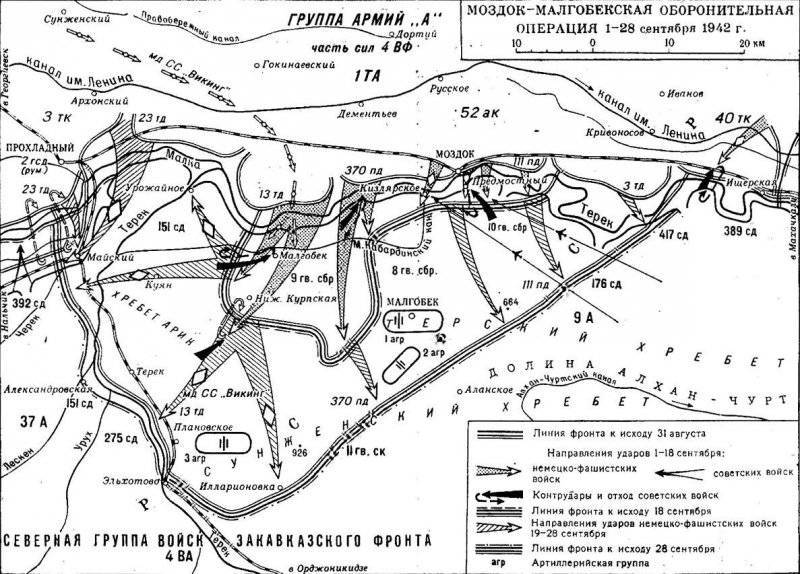
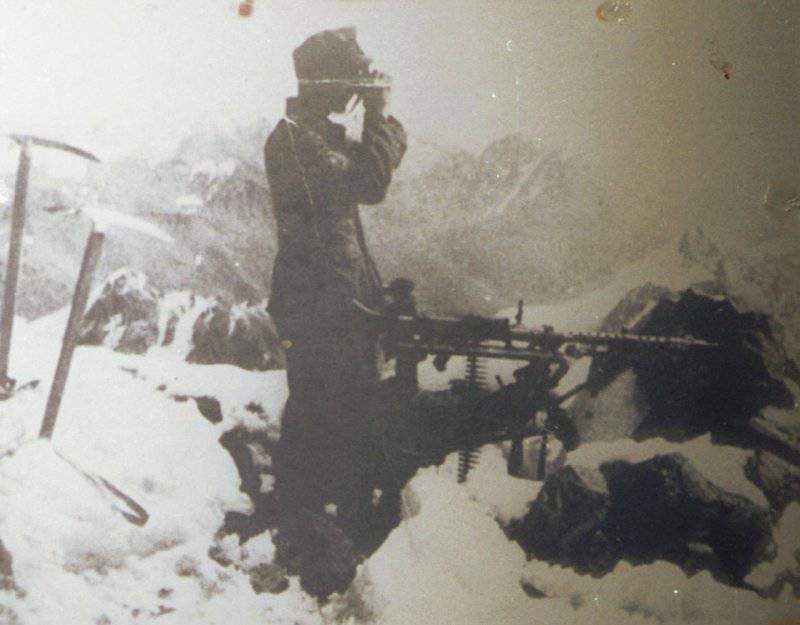
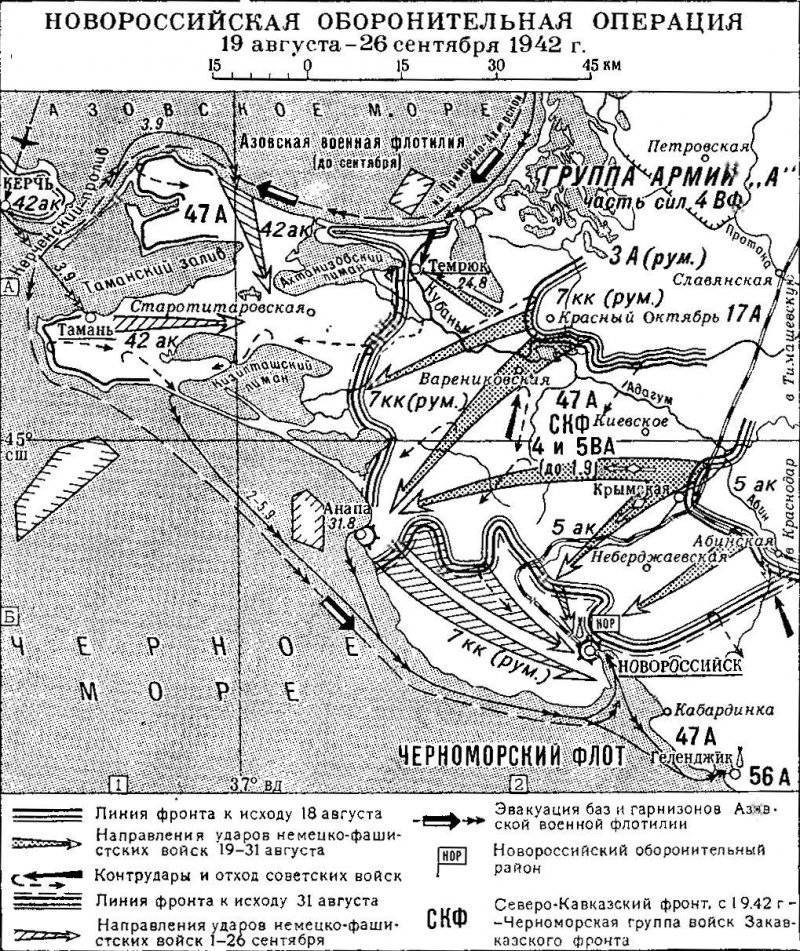
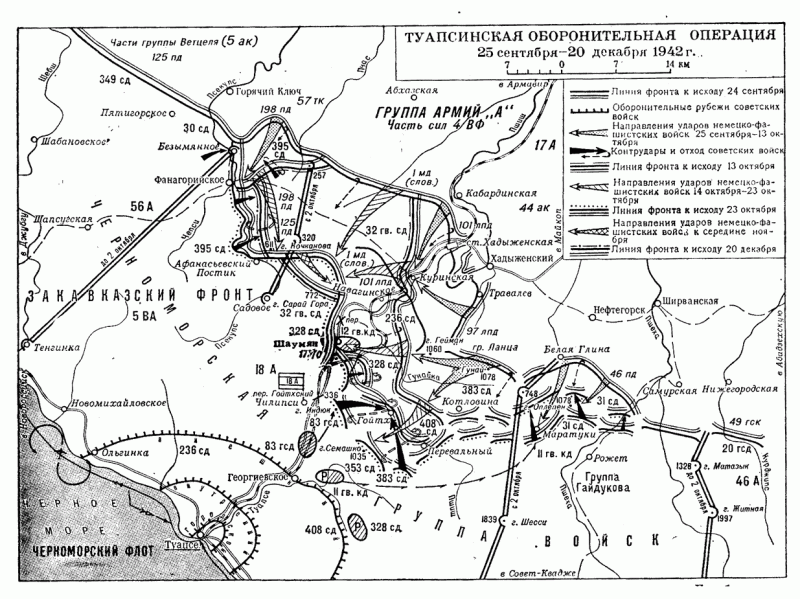
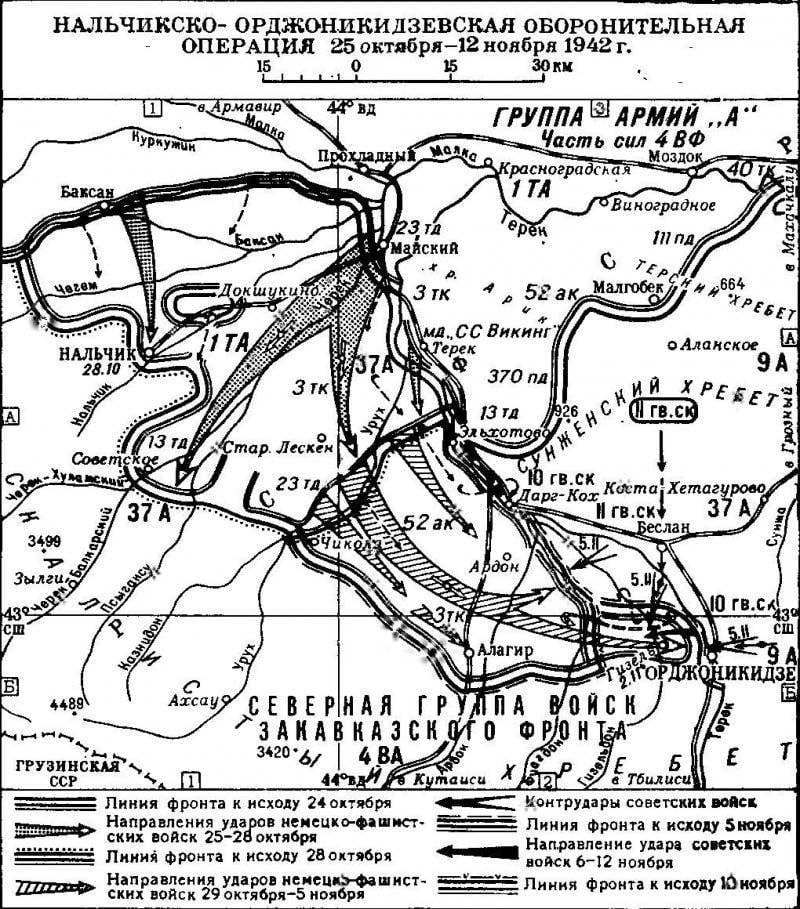
Information